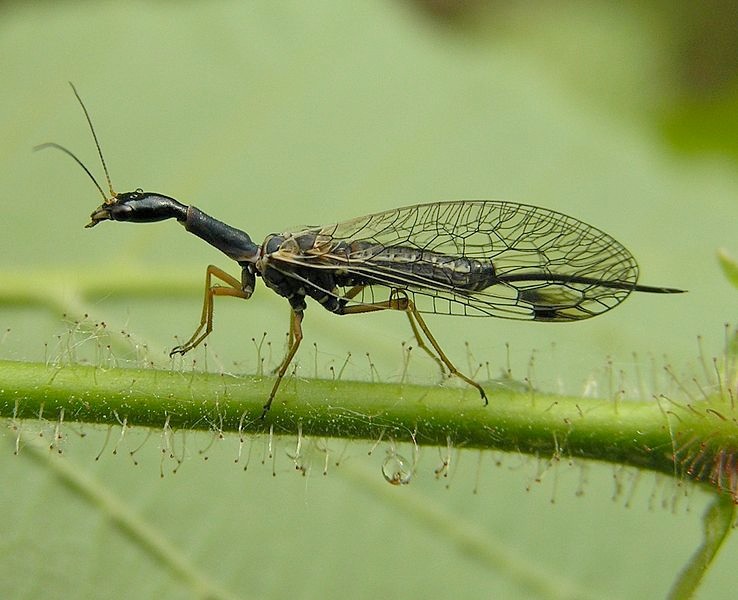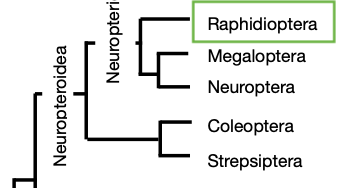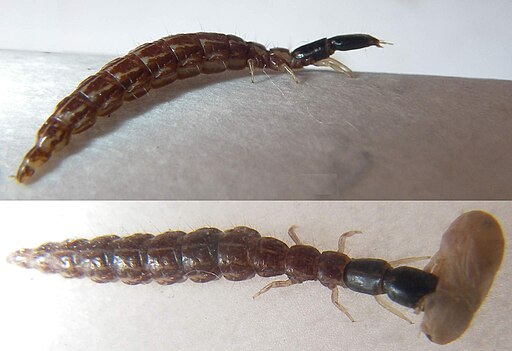31 Orders of Insects: Rhaphidioptera


Order Raphidioptera: Snakeflies
Raphidioptera
- common name = snakeflies
- from the Greek: ‘raphis’ for needle, ‘pteron’ for wing; a reference to them looking like flying needles
- found in temperate regions worldwide, but not in Australia or southern hemisphere; about 260 spp.; a relict group, more common in the Cretaceous
- live in leaf litter, under bark, often in coniferous forest; diurnal
- predators as adults and larvae (holometabolous)
Characteristics of Raphidioptera
Adults
- Medium size (15-30mm),
- head long and flattened, mobile; prognathous, mandibulate mouthparts
- Compound eyes large and separated; many without ocelli; antennae filiform, long, & multi-segmented
- Prothorax much longer than meso- and metathorax
- Fore wings rather longer than otherwise similar hind wings; fore wings have a pterostigma; numerous cross-veins near leading edge, branching venation
- females have a long ovipositor to deposit eggs under bark; no cerci
Immatures
- Immature stages (larvae) are terrestrial, large heads, first segment sclerotised, projecting mandibles
- pupa is mobile

Keen to learn more?
Check out Insect Spotlight video on snakeflies (YouTube, 6m 36s)!
Read more about fossil snakeflies.

